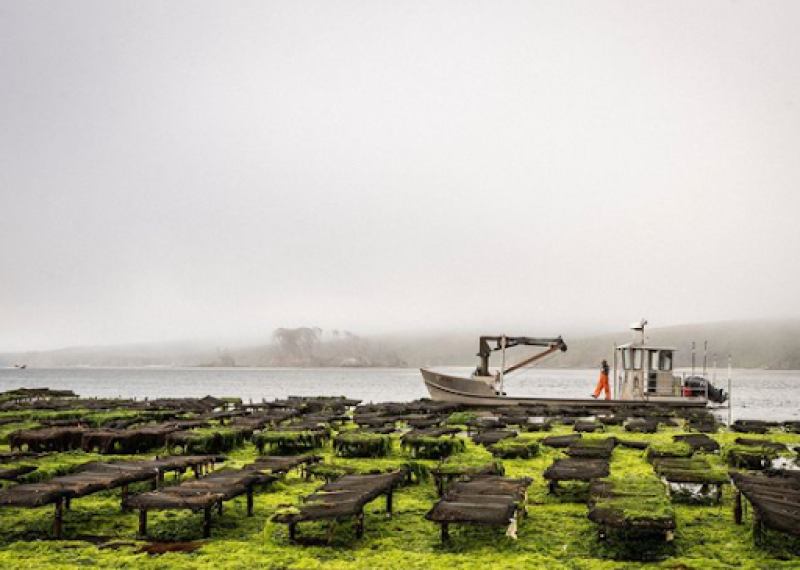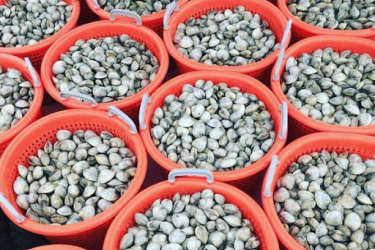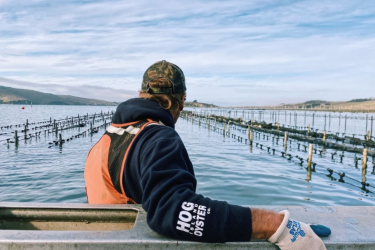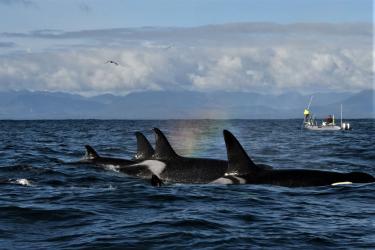Aquaculture producers work at all hours in all conditions, with weathered hands flipping oyster cages, plucking fresh kelp from their lines and tending net pens. These aquaculture producers are also committed stewards of the environment, managing their farms with sustainability in mind. In these Tide to Table Profiles, aquaculture farmers explain the stewardship and care that goes into keeping their crop as well as their businesses alive. Learn more about aquaculture and try a recipe idea straight from the farmers.
Atlantic Tide to Table Aquaculture Profile
The U.S. aquaculture industry produced $1.5 billion worth of seafood in 2018, with 41 percent of that value coming from the Atlantic region. Along the Atlantic coast, many aquaculture businesses are farming the ocean and helping to bring fresh and healthy seafood to market.
Atlantic Sea Farms
Atlantic Sea Farms fosters kelp aquaculture in Maine by providing free kelp seeds with a buy-back guarantee that they will purchase the fully raised seaweed at harvest. Then, they process that kelp into unique culinary products.
Get to know Atlantic Sea Farms
Pacific Island Tide to Table Aquaculture Profile
Pacific aquaculture production is very diverse. Key nearshore shellfish species include oysters, clams, and land-based facilities growing red abalone. Offshore species include Mediterranean mussels, rock scallops, finfish, and a variety of seaweeds. Aquaculture enterprises in the region are helping expand access to fresh seafood and year-round aquaculture jobs.
Blue Ocean Mariculture
Using large, open-ocean net pens off of Kailua-Kona, Blue Ocean Mariculture sustainably raises a native Hawaiian almaco jack species that they brand as Kanpachi.
Get to know Blue Ocean Mariculture
Gulf of Mexico Tide to Table Aquaculture Profile
Two Docks Shellfish
In Florida's Tampa Bay, Two Docks Shellfish specializes in growing clams and oysters, including Sunray Venus Clams which are unique to the region.
Get to know Two Docks Shellfish
West Coast Tide to Table Aquaculture Profiles
Hog Island Oyster Co.
Hog Island Oyster Co. uses marine biology to sustainably farm shellfish in California’s Tomales Bay.
Get to know Hog Island Oyster Co.
Hump Island Oyster Company
Founded by a civil engineer, Hump Island Oyster Company is a family-run business that farms oysters and kelp in the chilly waters of Southeast Alaska.
Get to know Hump Island Oyster Company
Swinomish Shellfish Company
The Swinomish Shellfish Company specializes in growing Pacific Oysters in Washington’s Skagit Bay, where tribes have harvested shellfish for thousands of years.
Get to know Swinomish Shellfish Company
Sustainable Seafood from Tide to Table
The Tide to Table series profiles members of the aquaculture community, who provide valuable jobs and increase access to fresh, sustainably sourced seafood in the United States. Aquaculture is about more than just seafood production. It is about ecosystem stewardship, coastal communities, and economic opportunities.









